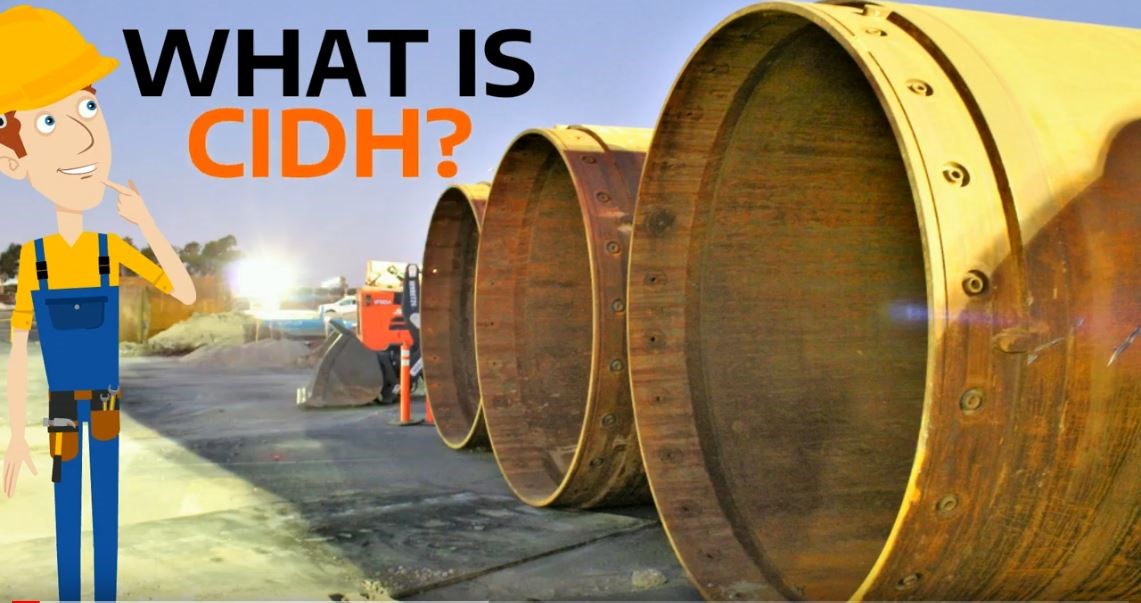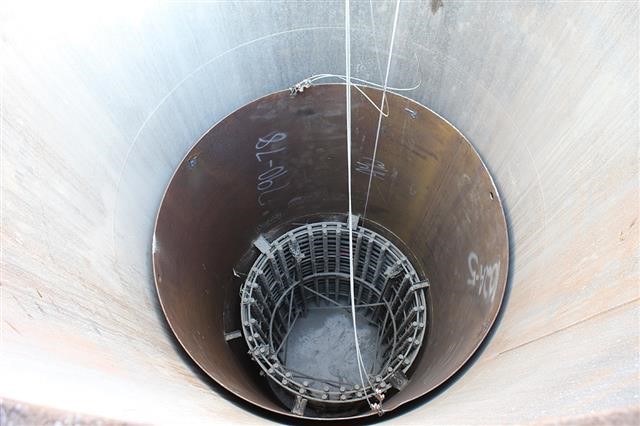
For Immediate Release
Nov. 6, 2019
Contact:
Stephanie Sampson
(424) 646-5260
LAX COMPLETES FIRST FOUNDATION WORK FOR AUTOMATED PEOPLE MOVER TRAIN SYSTEM
Column foundation work for the 2.25 mile elevated train system will continue over the next year as the future of LAX takes shape
The first foundation for the LAX Automated People Mover in the Central Terminal Area was completed
between Parking Structures 1 and 7.
(Los Angeles, CA) Los Angeles World Airports (LAWA) has announced that the Automated People Mover (APM) project, a 2.25 mile elevated electric train system that will transport travelers in and out of the Los Angeles International Airport (LAX) Central Terminal Area (CTA), has hit another significant milestone with the start of pile construction. These Cast-In-Drilled-Hole (CIDH) piles will form the foundation for the APM’s guideway and stations. The first piles for the East Station in the CTA and the Intermodal Transportation Facility – West (ITF-West) station off 96th Street were successfully completed.
The APM’s CIDH piles make the system’s elevated design possible, interfacing with the columns to support and stabilize the guideway and stations. A common construction method in the erection of bridge structures, CIDH piles are cast in-place by pumping concrete into drilled holes containing steel reinforcement cages. The diameter and depth of the piles vary based on design requirements, with the largest CIDH piles measuring up to 11 feet wide and the deepest measuring up to 99 feet deep.
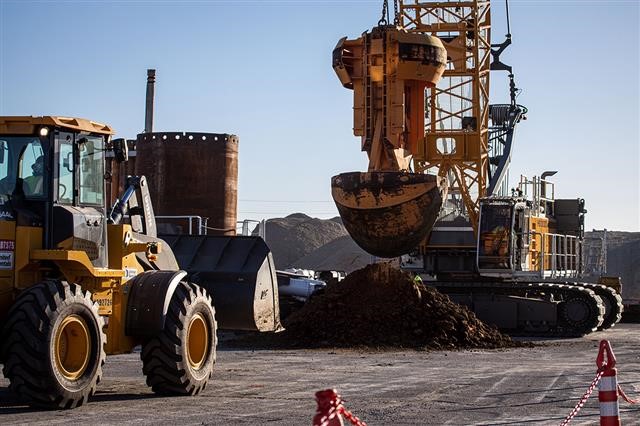
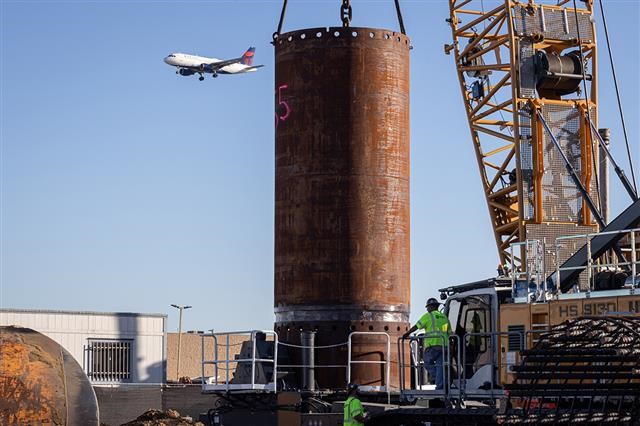
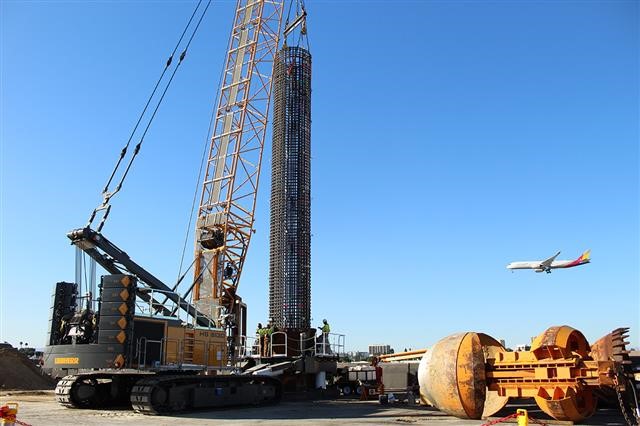
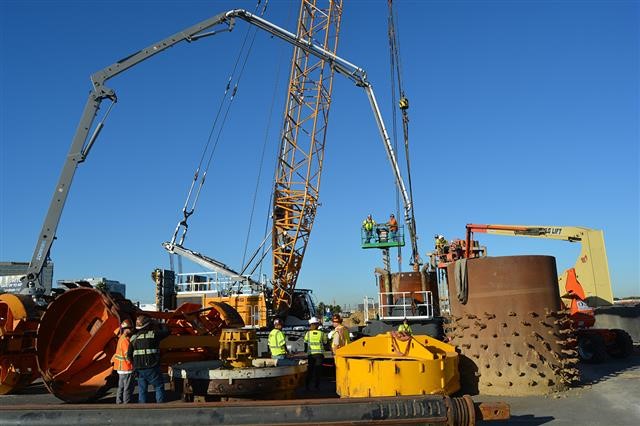
“The sheer size of these piles hints at the scale of what is to come – in terms of both LAX’s transformation and the heavy construction it will take to realize it,” said Bernardo Gogna, Chief Development Officer for LAWA. “The Automated People Mover is one of the most anticipated developments in LAX history and we are excited to watch the project’s progression.”
Earlier this year, LAX Integrated Express Solutions (LINXS), the developer on the project, conducted advance pile testing across the APM route to validate the final design and methodology for construction. Last week, the LINXS team started pile construction outside the CTA at the Intermodal Transportation Facility – West (ITF-West) Station. Over the last two weeks, LINXS crews began installing the first piles inside the CTA. Ultimately, there will be over 265 piles installed along the 2.25 mile APM route.
“Since being awarded the project last year, we’ve been focused on design and enabling work to advance a clear path for construction,” said Sharon Gookin, Project Director at LINXS. “Our team is committed to successfully delivering the APM project for LAX, and has been hard at work to prepare for this critical construction phase.”
CIDH work will run from now through Fall 2020, spanning the entire 2.25 miles of the guideway path. As sections of CIDH construction are completed, concrete columns will be constructed followed by falsework erection to support the cast-in-place concrete structural elements. Once the concrete has been placed and the structures are sufficiently advanced to be self-supportive, falsework will be disassembled and moved to the next section under construction.
Click on the image below to learn more about CIDH foundation work.
The APM, which is scheduled to open for passenger service in 2023, will transport passengers in and out of the CTA, connecting to L.A. Metro’s regional transportation system and LAX’s future Consolidated Rent-A-Car Facility and Intermodal Transportation Facilities. Only the system’s Maintenance and Storage Facility (M&SF) will be constructed at grade, with the rest of the system elevated up above the current LAX infrastructure.
For more information about the APM project, including fact sheets, renderings and construction impact notices, and to subscribe to receive email updates, visit FlyLAX.com/ConnectingLAX.
The final product once the concrete is pumped into the hole.
LAX, the fourth-busiest airport in the world and second busiest in the United States, was named a top-10 U.S. airport by SKYTRAX. LAX served more than 87.5 million passengers in 2018 and offers an average of 700 daily nonstop flights to 109 cities in the U.S. and 1,281 weekly nonstop flights to 93 markets in 47 countries on 69 commercial airlines. LAX ranks 10th in the world in air cargo tonnage processed, with more than 2.4 million tons of air cargo. LAX handled 707,883 operations (landings and takeoffs) in 2018.
LAX generated 620,600 jobs in Southern California, with labor income of $37.3 billion and economic output (business revenues) of more than $126.6 billion, according to an economic study based on 2014 operations. This activity added $6.2 billion to local and state revenues and $8.7 billion in federal tax revenues. The study also reported that LAX’s ongoing capital improvement program creates an additional 121,640 annual jobs with labor income of $7.6 billion and economic output of $20.3 billion; $966 million in state and local taxes; and $1.6 billion in federal tax revenues.
LAX was honored as having the “Best Overall Customer Service Program” by Airports Council International-North America; named the “Best Airport for Breastfeeding Moms” by Mamava; selected for the Top 10 “Best of the U.S.’s Big Airports” (Wall Street Journal) and “Most Pet-Friendly Airports in the U.S. (Mental Floss); named the second-most improved airport in the U.S. by JD Power; received an “Innovation Award” from the L.A. Better Business Challenge for its Central Utility Plant; and named a “Business Leader in Air Quality” by the South Coast Air Quality Management District.
LAX is also the second-most popular airport in the world to appear on Instagram, according to wego.com. LAX is part of a system of two Southern California airports – along with Van Nuys general aviation – that are owned and operated by Los Angeles World Airports, a proprietary department of the City of Los Angeles that receives no funding from the City’s general fund.
As a covered entity under Title II of the Americans with Disabilities Act, the City of Los Angeles does not discriminate on the basis of disability and, upon request, will provide reasonable accommodation to ensure equal access to its programs, services, and activities. Alternative formats in large print, braille, audio, and other forms (if possible) will be provided upon request.

